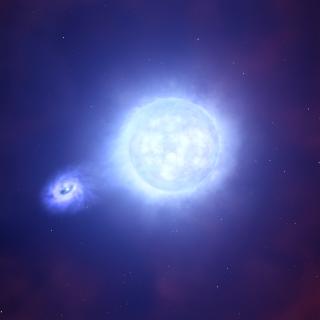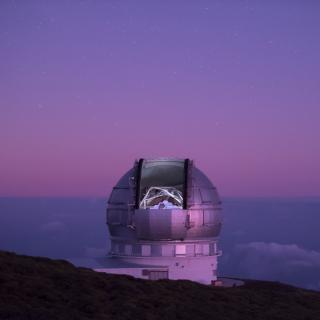It may interest you
-
 La viceconsejera de Planificación Territorial y Reto Demográfico del Gobierno de Canarias, Elena Zárate Altamirano, ha visitado las instalaciones del IACTEC , en el Parque Científico y Tecnológico de las Mantecas, para conocer de primera mano el proyecto European Solar Telescope (EST). Zárate se ha reunido con el equipo promotor del EST y ha recorrido las instalaciones del centro de tecnología del IAC donde están ubicados algunos de sus laboratorios de instrumentación. En la reunión han participado, entre otros, la directora técnica del proyecto Mary Barreto, la ingeniera civil YaniraAdvertised on
La viceconsejera de Planificación Territorial y Reto Demográfico del Gobierno de Canarias, Elena Zárate Altamirano, ha visitado las instalaciones del IACTEC , en el Parque Científico y Tecnológico de las Mantecas, para conocer de primera mano el proyecto European Solar Telescope (EST). Zárate se ha reunido con el equipo promotor del EST y ha recorrido las instalaciones del centro de tecnología del IAC donde están ubicados algunos de sus laboratorios de instrumentación. En la reunión han participado, entre otros, la directora técnica del proyecto Mary Barreto, la ingeniera civil YaniraAdvertised on -
 Massive stars in metal-poor galaxies often have close partners, just like the massive stars in our metal-rich Milky Way. This has been discovered by an international scientific team in which research staff from the Instituto de Aastrofísica de Canarias (IAC) and the Universidad de La Laguna (ULL) participate. They used the European Very Large Telescope in Chile to monitor the velocity of massive stars in the Small Magellanic Cloud. The research is published in Nature Astronomy . For the past twenty years, astronomers have known that many massive stars in the metal-rich Milky Way have aAdvertised on
Massive stars in metal-poor galaxies often have close partners, just like the massive stars in our metal-rich Milky Way. This has been discovered by an international scientific team in which research staff from the Instituto de Aastrofísica de Canarias (IAC) and the Universidad de La Laguna (ULL) participate. They used the European Very Large Telescope in Chile to monitor the velocity of massive stars in the Small Magellanic Cloud. The research is published in Nature Astronomy . For the past twenty years, astronomers have known that many massive stars in the metal-rich Milky Way have aAdvertised on -
 The Solar System research group at the Instituto de Astrofísica de Canarias (IAC) is participating in the international programme to keep a closet track of asteroid 2024 YR4. The aim is to determine its orbit with the highest possible precision before it stops being observable by ground based and satellite telescopes in April, and so improving our value of the probability that it will impact the Earth in 2032. In this context several telescopes of the Canary Observatories of the IAC are playing an outstanding role in this observing campaign: The Gran Telescopio Canarias (GTC) at the Roque deAdvertised on
The Solar System research group at the Instituto de Astrofísica de Canarias (IAC) is participating in the international programme to keep a closet track of asteroid 2024 YR4. The aim is to determine its orbit with the highest possible precision before it stops being observable by ground based and satellite telescopes in April, and so improving our value of the probability that it will impact the Earth in 2032. In this context several telescopes of the Canary Observatories of the IAC are playing an outstanding role in this observing campaign: The Gran Telescopio Canarias (GTC) at the Roque deAdvertised on
